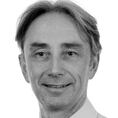BOOK OF THE DAY: Lance Armstrong – The World's Greatest ChampionBy John Wilcockson John Murray 383pp, £18.99
IS THE Tour de France an international sporting phenomenon that captures the imagination of millions of enthusiasts every summer? Or is it the showcase for a sport that has been discredited by its association with cheating? The answer is both. Professional cycling’s pre-eminent race is a massively popular spectacle and a battleground between those at the cutting edge of illicit performance enhancement and those who want to compete “clean”.
And the dominant force in this mix? Lance Armstrong: seven times Tour winner, cancer survivor, the first A-list celebrity cyclist and the most divisive figure in the history of the sport. The 37-year-old American returns to the race tomorrow, four years after his retirement following that record seventh straight Tour victory. Such was his legacy, however, that he – and the debate that surrounds him – had never gone away.
His comeback is attributed to his wish to build the profile of the Lance Armstrong Foundation which has raised $250 million (€178 million) for cancer campaigning and advocacy activities since he set it up in 1997. But, says John Wilcockson, there is a deeper motivation: the desire to prove to his children that he competes clean.
The challenge facing Armstrong in this regard is summed up in the reaction to his first Tour win in 1999. As Wilcockson recalls, it turned him into a lightning rod for everything good and bad in the sport. “The good was a fabled story of a poor boy from Texas winning the Tour after a near-fatal battle with cancer . . . The bad was a sceptical public’s perception that his metamorphosis could be explained by only one thing: doping.” Little has changed since.
Depending on who or what you believe, Armstrong’s story is the most inspirational in the history of sport or something very sinister. John Wilcockson is in the pro-Armstrong camp. Otherwise the veteran cycling journalist would not have had such access to the notoriously combative Armstrong and those closest to him. Through their recollections, he traces Armstrong’s story from troubled youth, to early success in professional cycling, to his battle with cancer and his return to racing. This book is at its best when examining the influences that allowed – and actually propelled – Armstrong to exploit a prodigious natural talent.
But Wilcockson will not satisfy those who doubt Armstrong (and arguably he never could). The Texan has never been proven to have cheated. However, his past link with controversial Italian trainer Dr Michele Ferrari has contributed to a shadow over him. And this has darkened as top cyclists, including some of Armstrong’s best known contemporaries, have been toppled by doping disclosures – sometimes years after the event.
Such is the public perception of cycling that those in its highest echelons are now effectively required to prove their innocence. And therein lies a fundamental flaw in Wilcockson's book. Lance Armstrong's recovery from cancer – as chronicled in his autobiography It's Not About the Bike: My Journey Back to Life(2001, Yellow Jersey Press) – is one of the most life-affirming stories ever told. It has inspired millions of cancer sufferers. But he is not the "world's greatest champion" as Wilcockson suggests. The low public standing of professional cycling means this accolade could never go to someone from its ranks.
Anyone seeking to understand why this is so would do well to seek out another book, Matt Rendell's exhaustively detailed The Death of Marco Pantani(2006, Phoenix). This account of the life and demise of the 1998 Tour de France and Tour of Italy winner provides a grim exposition of how drugs can destroy individual sportsmen and can consume a sport.
Paul O’Neill is deputy editor of The Irish Times
